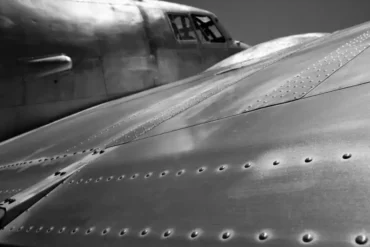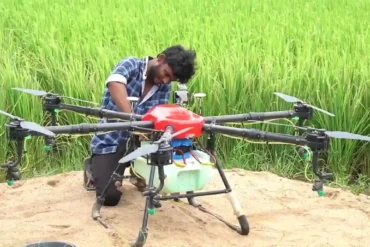Much like phones and other gadgets that communicate, drones use radio waves across certain frequencies. So what frequency do drones typically use?
In short, most drones operate from 900 MHz to 5.8 GHz. Hobbyist drones often use 900 MHz, while drones with cameras tend to use 2.4 GHz. Some newer models now use 5.8 GHz to avoid interference from Wi-Fi.
Why Different Frequencies?
Non-camera drones usually use 900 MHz, in the ultra-high frequency (UHF) band. Originally meant for scientific and industrial devices, 900 MHz also works for garage door openers, walkie-talkies, toys and more.
The FCC assigns frequencies like 27 MHz and 49 MHz for toys and other household items. Early drones used these, but their short range and signal issues made flying multiple drones difficult.
The FCC splits up frequencies to avoid interference between gadgets. For example, AM radio uses 535 kHz to 1.7 MHz. As drones added cameras and video, manufacturers shifted to 900 MHz and higher. 900 MHz handles more data than walkie-talkie bands, with better penetration through walls.
But for live video feeds, 900 MHz has limits. So newer camera drones use 2.4 GHz or 5.8 GHz instead, despite shorter ranges. These frequencies carry more video data than 900 MHz.
Wi-Fi networks and other home electronics also use 2.4 and 5.8 GHz. This can cause interference issues for drone pilots.
How Drones Communicate
Drones use invisible radio waves on certain frequency bands to communicate. Frequency measures how many waves occur per second – in units called hertz (Hz).
Frequencies span from 20 kilohertz (20,000 Hz) to 300 gigahertz (300 billion Hz). Communication involves a transmitter sending data as waves, and a receiver picking them up. Both drones and controllers transmit and receive.
Transmitters and receivers have a unique ID code to link together securely. This prevents other devices from interfering.
Lots of tech uses radio frequencies (RF) – think phones, Wi-Fi, garage clickers, walkie-talkies, and more. Radio and TV stations also each broadcast at an assigned frequency.
Do Military Drones Use Public Frequencies?
Actually, military drones usually communicate by satellite instead of public frequencies. Satellites in orbit allow links across the world without interference.
Range depends on battery life rather than signal strength. This minimizes disruption from hacking or jamming.
How Far Can a 2.4 GHz Drone Fly?
For 2.4 GHz drones, range reaches about 1 to 4 miles normally. But radio frequencies need “line of sight” – direct view between controller and drone.
In cities, buildings and Wi-Fi can disrupt the signal. Data loss leads to errors or crashes.
Upgrading the antennas can extend the range. Affordable models have 2 decibel antennas. With a stronger 8-10 db antenna, some 2.4 GHz drones fly over 4 miles. 900 MHz models manage up to 20 miles, but lack live video.
Can You Disrupt a Drone’s Signal?
Some people build “jammers” to overwhelm drones with noise on their frequency. This blocks communication so they can’t fly.
While jammers are illegal, hobbyists make them from parts. A jammer blasts high-power signals matching the drone receiver’s frequency.
If connection drops, drones are programmed to land immediately or return home using GPS.







